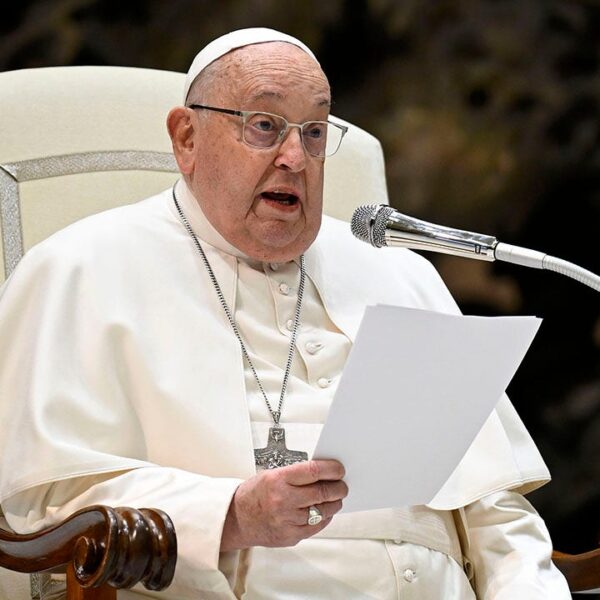
Good morning. In less than three years, Sudhanshu Priyadarshi, CFO of Keurig Dr Pepper (KDP), was tapped for a chief executive role.
KDP announced on Monday an agreement to acquire Amsterdam-based coffee-seller JDE Peet’s for about $18 billion. The deal is expected to close in the first half of 2026. Afterward, KDP (No. 284 on the Fortune 500) will split into two U.S.-listed companies: Priyadarshi will lead the coffee business, and current KDP CEO Tim Cofer will head the beverage business, with brands such as Dr Pepper, 7 Up, and Snapple. The separation is expected to be completed by the end of next year.
“Sudhanshu has been a true partner of mine over the past two years,” Cofer said on a call with investors Monday morning. He described him as an “ambitious strategic thinker, a financially-minded operator, and an inspiring people leader.” Priyadarshi said in a LinkedIn post Monday that it’s an honor to be named the future CEO of the global coffee company.
The road from CFO to CEO
Priyadarshi spent 14 years at PepsiCo in finance and strategy, including as CFO for Global R&D & Nutrition. He later served as global COO at Cipla, handling multiple M&A deals, and held senior finance roles at Walmart. Before joining KDP in November 2022, he was CFO of Vista Outdoor.
KDP’s board chose Priyadarshi for his strong consumer packaged goods foundation at PepsiCo, extensive strategy and M&A experience—going through a spinoff will “feel natural to him,” Scott Simmons, co-managing partner at executive search firm Crist Kolder Associates, told me.
“Most importantly, just a year after joining KDP as CFO, he was given responsibility for the $2 billion international business,” Simmons said.
As more finance chiefs move into CEO roles, Simmons added, Priyadarshi’s move into general management overseeing a significant P&L, combined with his experience since 2022 as a board member at Wabash National, are “textbook plays for growing a CFO into CEO.”
Morningstar analyst Dan Su told me that, as CEO for the global coffee company, investors will focus on Priyadarshi’s global operational experience and ability to lead diverse teams.
KDP itself was established in 2018 following the $18.7 billion merger of Keurig Green Mountain Coffee and Dr Pepper Snapple. This made it the most diversified enterprise in nonalcoholic “refreshment” beverages, with more than 125 brands as owner, investor, or distributor. This diversification helped the company weather shifts in consumer preferences.
KDP’s acquisition of JDE Peet’s comes as coffee prices climb amid new trade wars and the recent 50% U.S. tariff on Brazilian imports, the world’s top coffee exporter. On Monday, the market initially disliked the move, sending KDP shares down as much as 11% and erasing billions in value. Still, analysts and Fortune’s Shawn Tully see Cofer’s strategy as a fundamentally sound long-term shift for the company. (You can read Tully’s analysis here.)
JDE Peet’s deal will expand its global coffee portfolio and generate about $400 million in synergies over three years, according to KDP.
Priyadarshi’s journey from CFO to CEO marks the start of a new chapter—not just for him, but for a global coffee leader poised for expansion as industry dynamics shift.
Sheryl Estrada
[email protected]
Leaderboard
Big Deal
Research by EisnerAmper, a global business advisory firm, reveals a gap between employees and employers regarding AI use. While 80% of employees surveyed report a net positive experience using AI at work, only 36% say their company has a formal AI policy in place.
Just 22% of employees who used AI for work in the past year report that their employer actively monitors their AI usage.
Also, 60% of employees rely on free AI platforms rather than internally developed ones (24%) or external, company-paid tools (43%). Additionally, 28% would use AI at work even if it were banned.
The findings are based on a survey of 1,017 U.S. full-time desk workers with a bachelor’s degree or higher, all of whom have worked with AI in the past 12 months.
Going deeper
From the report: “Leaning on West Texas’ booming Permian Basin, Chevron says its combination of sheer scale and technology allows it to hop off the spending treadmill and finally pump the shale business for healthy profitability without the constant cry for “Drill, baby, drill.” While Exxon Mobil may remain larger, Chevron is aiming for No. 1 in the leery eyes of a Wall Street that previously soured on the oil sector.”
Blum continues, “The closing of its $53 billion megadeal to acquire Hess in July allows Chevron to focus internationally on new growth, especially its acquired position offshore Guyana—arguably the largest oil discovery of the century—while using the U.S. and its massive footprint in the Permian to reap the needed influx of free cash flow.” (You can read the complete report here.)
Overheard
“Hardware companies that enlist next gen AI to put customers first, capture enormous value, introduce infrastructure efficiency, and attract sustainable investment will be leaders in the market.”
—Matt Rogers is the cofounder and CEO of Mill, a wasted food prevention company, writes in a Fortune opinion piece. Rogers co-founded Nest, acquired by Google in 2014 for $3.2B. Prior to Nest, he worked with Steve Jobs to build the very first iPhone, as well as device hardware in the 2000s.















